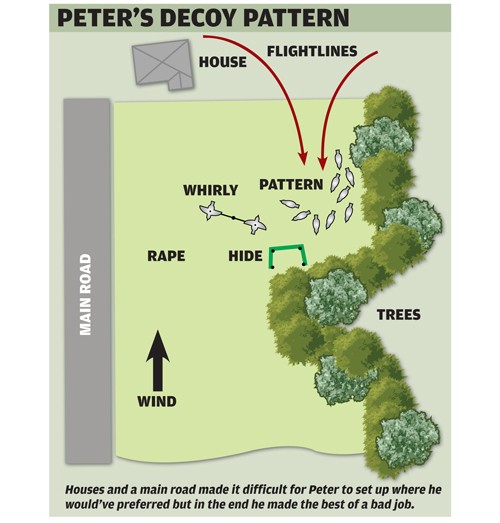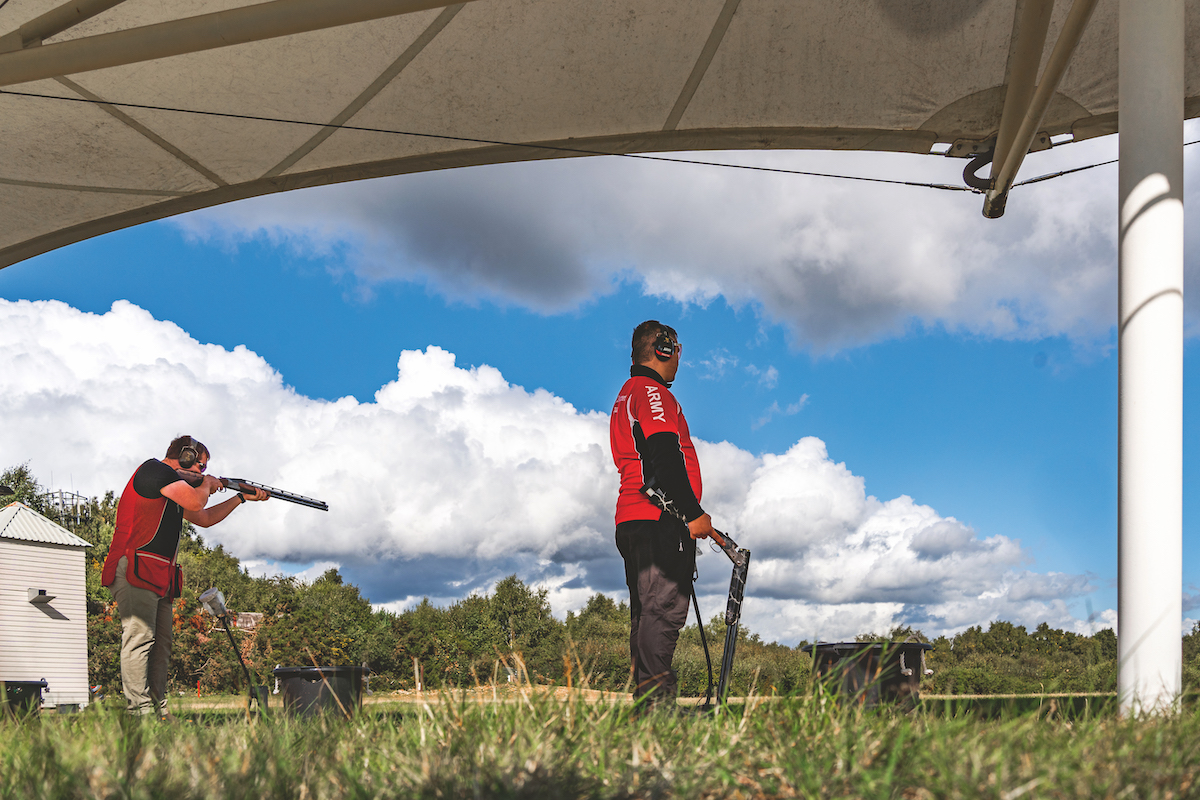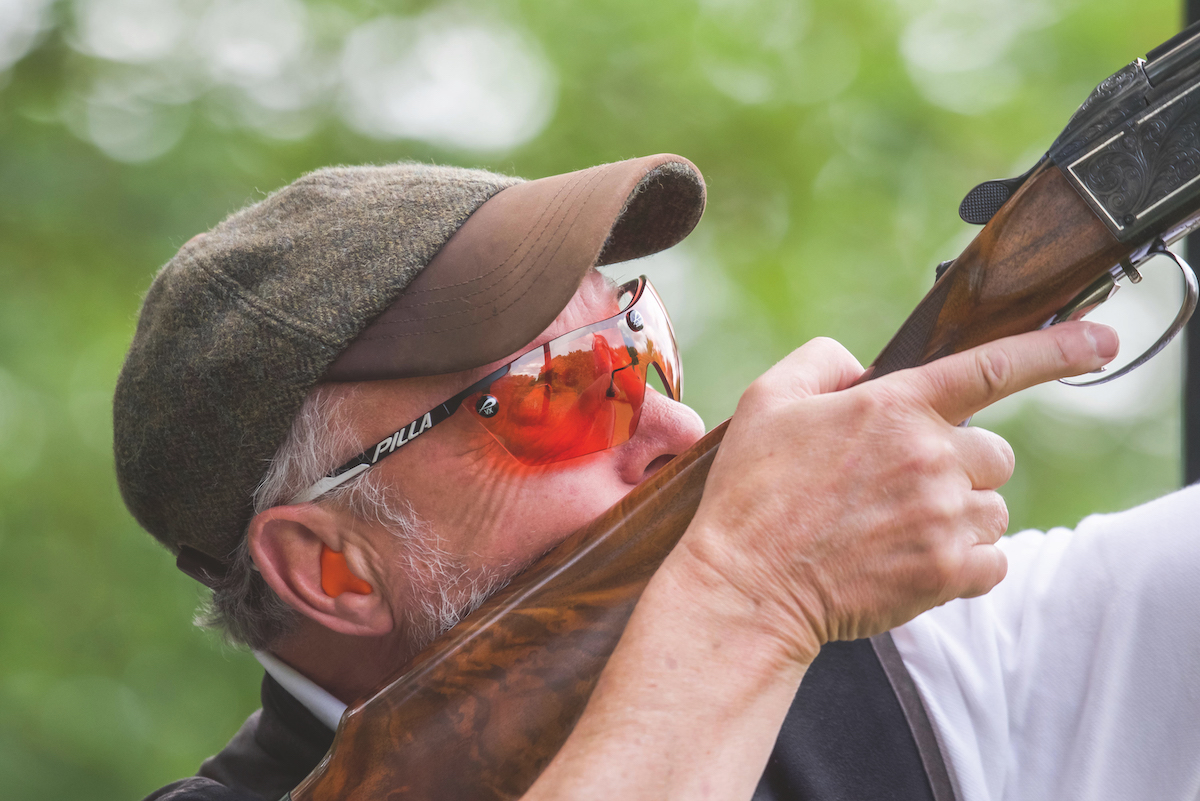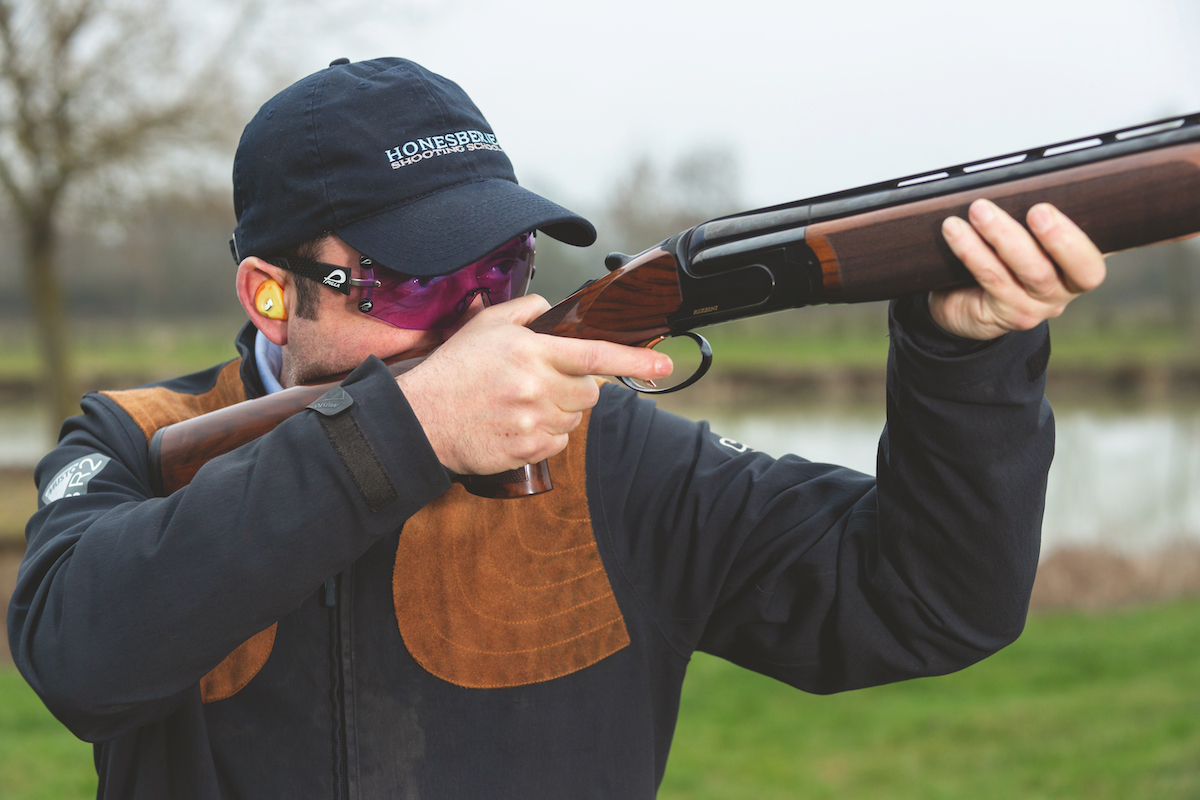Pigeon shooting permission!

Pigeon shooting permission.
These days, I’m not often tempted by the sight of a thousand pigeons sitting in the trees round any given rape field.
Bitter experience suggests these birds will simply lift as one, fly off and descend on another field half a mile away.
By the beginning of February, pigeons will have knowledge of every single rape field over a huge area, and won’t hesitate to move on the moment a farmer pulls into the field to let off a rocket or change the cylinder on the numerous gas-guns he’ll have in operation.
Give it another couple of weeks, though, when the rape starts to grow, and it’s a different story, but for me for the time being, pigeons are quite safe… Until recently, that is.
I regularly passed a field of rape next to a busy main road, and had noted that, whilst there were numerous plastic flags placed all over the field, there was no gas-gun working.
A big lot of birds were always either in the trees surrounding the field, or busily tucking into the rape out in the centre. Nothing to get excited about there, but what did get the juices flowing was the fact that every time I went past, at whatever time of day, a few pigeons could be seen lifting over the road to join the masses already in residence.
Encouraged by my pigeon-shooting friend Paul – who had recently had a couple of 100+ bags – I decided to have a closer look…
SEEKING PERMISSION
Oh, did I forget to mention that at this stage I didn’t even know who owned the field!
My first port of call was to a farmer whose land adjoined the field in question. He was not sure who actually owned the field, but he could tell me who was farming it on his behalf. Bingo!
It was a farmer whose land I shoot regularly; it seemed a formality to get the green light to have a go. The farmer was delighted for me to shoot, but unfortunately said he thought the land was let to a small syndicate, and I would have to clear it with the owner.
I’m never really hopeful when trying to gain permission to shoot pigeons by asking over the telephone, but as this owner lived in Somerset, I had no option!
He did indeed confirm the shooting was let, but kindly gave me the number of the man to whom I needed to speak.
My hopes were sinking by the minute, but with absolutely nothing to lose, I dialled the number, and spoke to a very enthusiastic chap called Jay.
After explaining who I was and what I was hoping to do, I was stunned when he said I could help myself. ‘In fact,’ he said, ‘I’ve always wanted to meet you. I’ll pop down to see how you’re getting on.’
WET AND WINDY
I deliberately waited for a day when a decent wind was blowing, even though heavy showers were forecast. This didn’t worry me unduly, as wet and windy trumps still and dry, every time.
What concerned me more, though, was how the birds left the field when I walked them off. (I firmly believe you can get a good idea of how keen they are, simply by noting how reluctant they are to leave.)
As hoped for, a mass of pigeons were already feeding at 9.30am, with several hundred more sitting in the trees, steadily peeling out to join the throng on the floor.
The ones on the deck were the first to spot me, but instead of spiralling off the field like scalded cats, they simply lifted to join their mates still in the trees.
These also did not want to go, but leapfrogged each other to land in other trees further on.
Eventually, I got them right away downwind, but only then realised how difficult this task was going to be. The obvious place to set up was horribly close to the main road, and I would be shooting straight at it, so this was a definite no-no.
A house within 300 yards ruled out a second option, so I was left to try and manoeuvre returning pigeons to one side, and take them as they lifted into the trees under which I was sitting.

The plan was good, but would it work?
DISASTER STRIKES
The first little party was soon on its way back, and they followed the script perfectly, with an easy right and left, right over my head, but then disaster – the shots put the whole flock (which had not gone away as far as I had hoped) into the air and heading my way.
I had no option but to step out of the hide and try to turn them back from whence they came.
Probably half the flock did just that, but the other half simply side slipped on the wind and powered on past me.
Still, half a flock was better than none. I just had to hope for the best. I need not have worried because a steady flight developed, but infuriatingly, they did not follow the same path as the first lot.
Instead, the majority veered left, and while they were still in easy range, I couldn’t fire at them because of the road.
I was losing so many chances that I decided to move the rotary right away from the pattern, and so far left as to be almost out of range.
The effect was immediate, with pigeons now being forced to turn right, which brought them nicely across my front. I’m finding, more and more, that you can use the whirly to actually deflect birds to where you want them, rather than simply as an attractor.
Half way through the afternoon, Jay turned up as promised, and he was quite surprised how well the pigeons were co-operating.
Like me, he’d become resigned to not making a decent bag at this time of year. He needed no prompting to fetch his gun and join me in the hide for an hour, during which time he knocked down several cracking birds.
A particularly heavy shower put an end to the proceedings at around three o’clock, but a bag of 55 was more than ample reward for a soaking!








